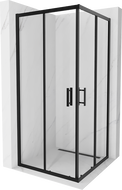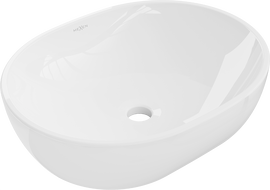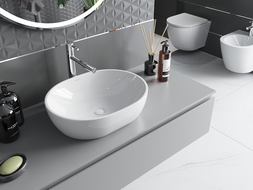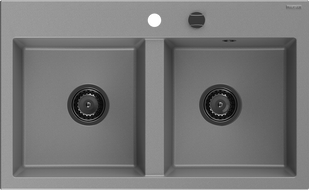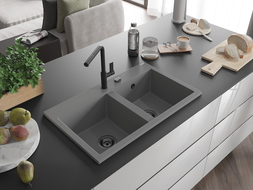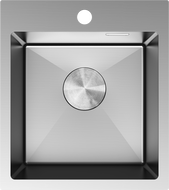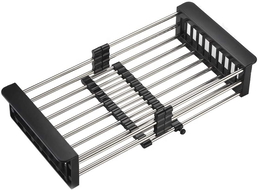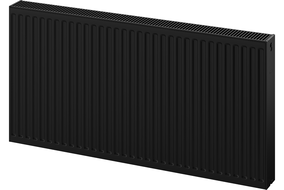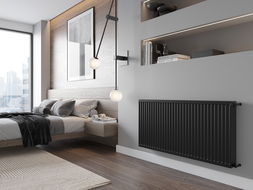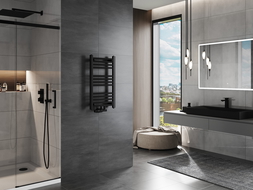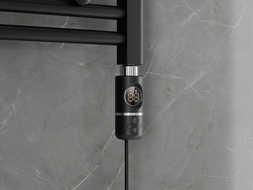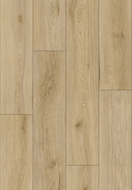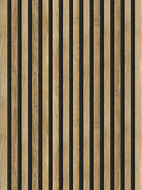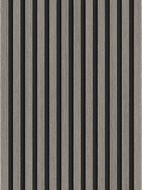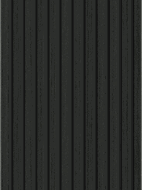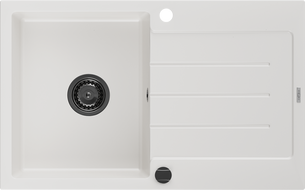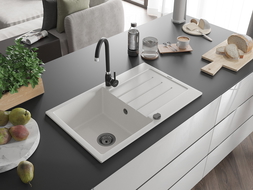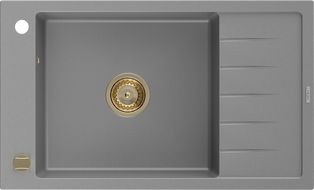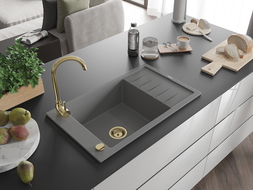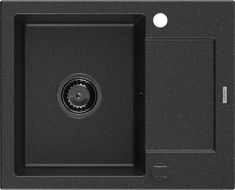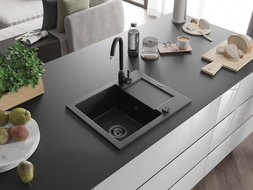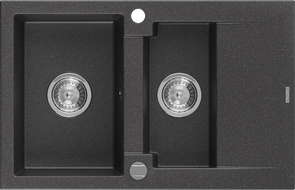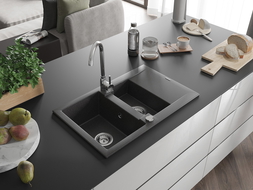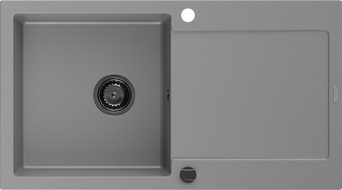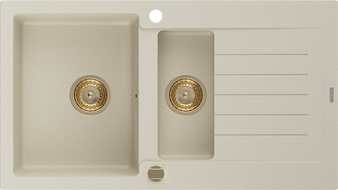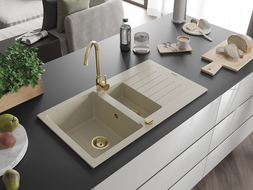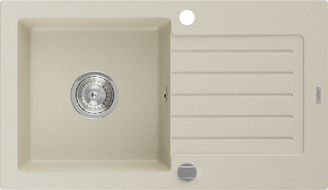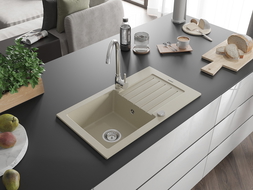
When buying a new kitchen sink, you need to make a few important decisions, as it is a piece of equipment that is purchased for several years, so it should be both functional and elegant. In addition to deciding on its color or shape, and whether it should be a single-bowl sink or perhaps a model equipped with two bowls, you also need to decide whether it will be a sink with or without a drainer. Before making the final choice, it's worth getting acquainted with the available sink models and also information on where each type of sink works best.
Do you need a sink with a drainer?
Many people wonder about the necessity of buying a sink with a drainer, often citing the possession of a dishwasher. Indeed, if you have virtually given up on hand washing dishes, a sink with a drainer may seem like an unnecessary use of space on the cabinet or countertop. This is a common belief, especially for those with a small kitchen or kitchenette.
However, a drainer is useful not only when washing dishes; it can be a convenient extra place for setting down a hot pot, placing vegetables or fruits you want to wash, and useful for defrosting items. Moreover, drainers serve as a kind of separation between the sink and the countertop. It is also a means of protection against splashing during washing, appreciated by those with a wooden top made from natural timber.
Sturdy sinks with drainers
Modern sinks equipped with drainers or without them are available in a very wide range of colors, shapes, and sizes. They can also differ in terms of installation method; you can choose a recessed or countertop model. The decision to have a double bowl or single bowl sink with a drainer is just one of many you need to make when buying a new sink. However, it is worth knowing that regardless of whether you choose steel, granite, or another material for the sink, a drainer is a practical solution.
The choice of material does not actually affect the durability of the sink, as both those made of enameled steel, conglomerate, and other materials are very resistant to mechanical damage and high temperatures. In this case, a low price does not necessarily mean inferior quality. However, if you have limited countertop space and don't want to dedicate it to a drainer, you can opt for a 1.5 bowl sink model, where an additional narrow bowl with a separate drain will successfully serve as a classic drainer.
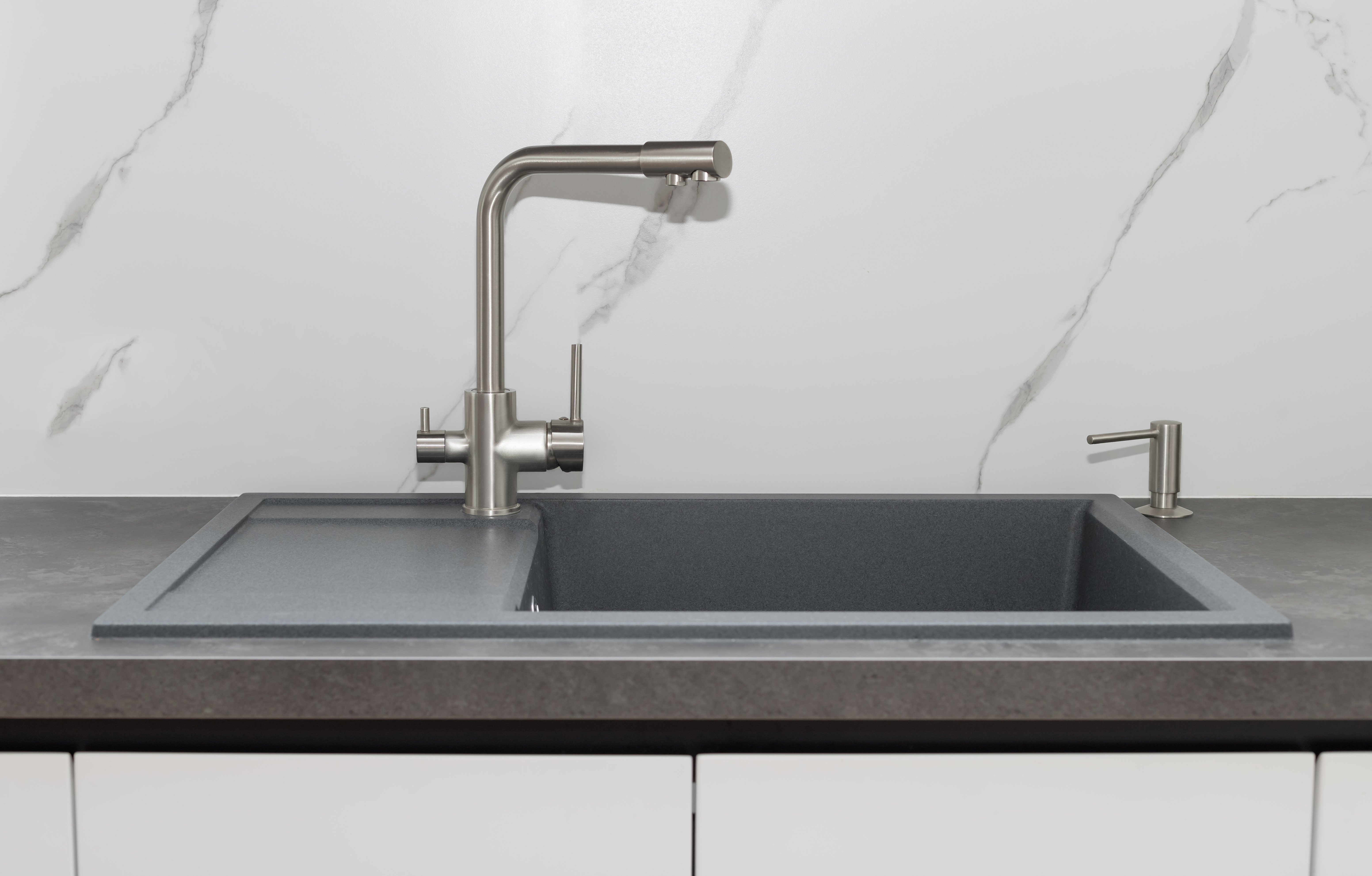
Sink drainer – main advantages
The dishwasher is becoming more common in many kitchens, and therefore some choose to buy a single-bowl sink without a drainer, considering it an unnecessary detail that doesn't fit with the worktop. Yes, it does take up a little extra space, but the wide range of sink models means finding one that fits perfectly with your kitchen should not pose the slightest difficulty. You will appreciate the presence of a drainer very quickly.
What to do with dirty dishes before placing them in the dishwasher? Where will you put soil-covered vegetables or fruits brought from the store? And your favorite mug, from which you drink coffee or tea several times a day? Stainless steel drainers could be the answer to all these questions. If you don't have space for a classic drying rack for frequently used dishes, the drainer will be the most convenient place to set them aside. In other words, a double-bowl or single-bowl sink with a drainer remains a reliable solution!
Modern alternatives to traditional drainers
If you have a single-bowl sink, perhaps due to very limited space, but you lack space for placing washed dishes or cutlery, consider the original solution of a drainer attached to the walls of the sink. This way, water from washed items can drain directly into the sink bowl, and no additional devices will appear on the countertop surface. The main advantage here is the drainer's size and the fact that you can remove it at any moment. If you have a two-bowl sink, the second bowl can successfully take on the roles attributed to drainers and can be used for drying washed pots before storing them in the cupboard.
Another idea, also worth considering, could be a dish drainer hidden in the cabinet under the sink. This handy and very aesthetic solution allows for convenient drying of dishes while maintaining order in the kitchen. The countertop and single-bowl sink remain empty, even after heavy washing. Additionally, you avoid the need to wipe dishes before putting them in their proper place. Another idea is a container allowing for cutlery drying, as not all can be washed in the dishwasher, and you might not always have time to dry them properly; here, an additional drainer placed on the countertop or the sink's edge will come in handy.

